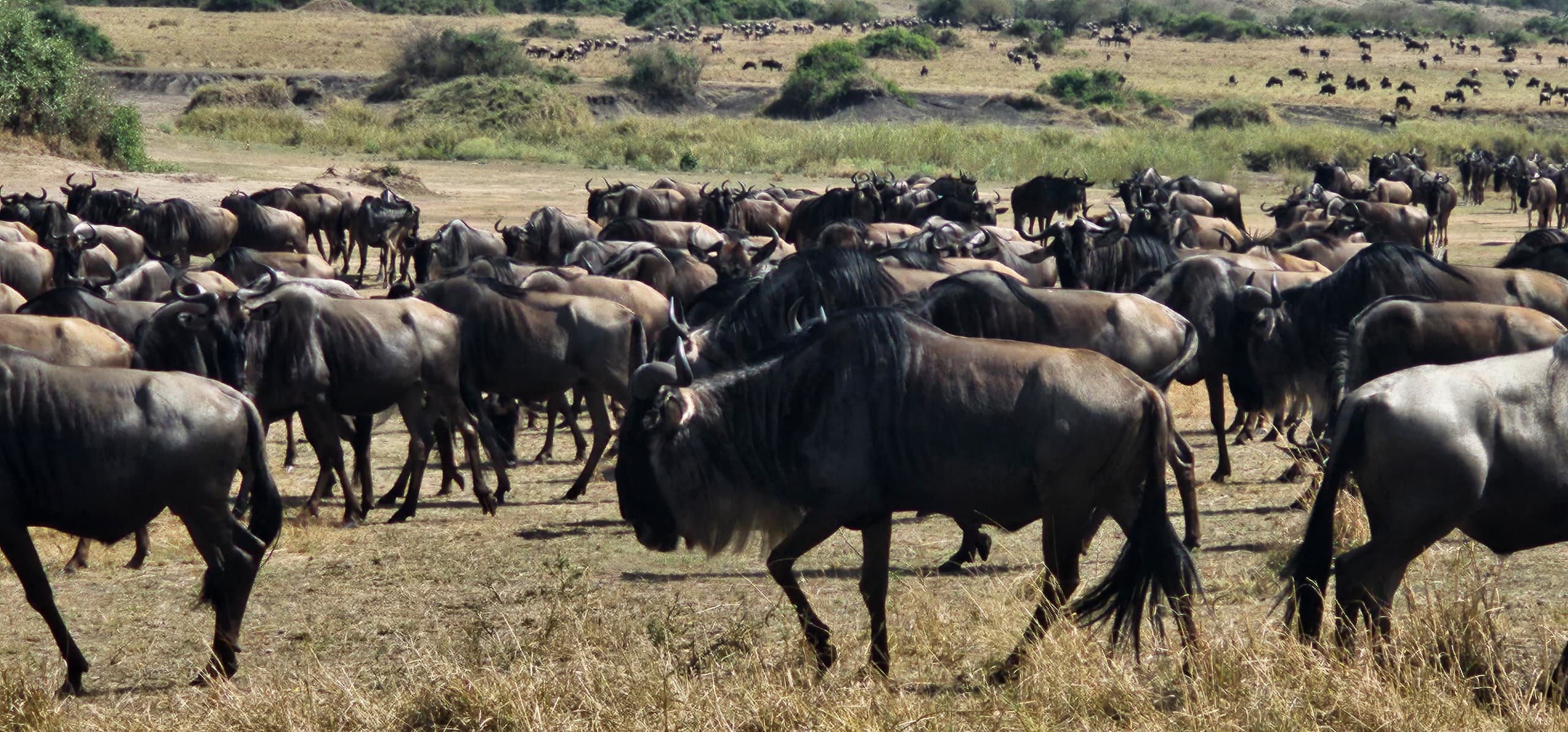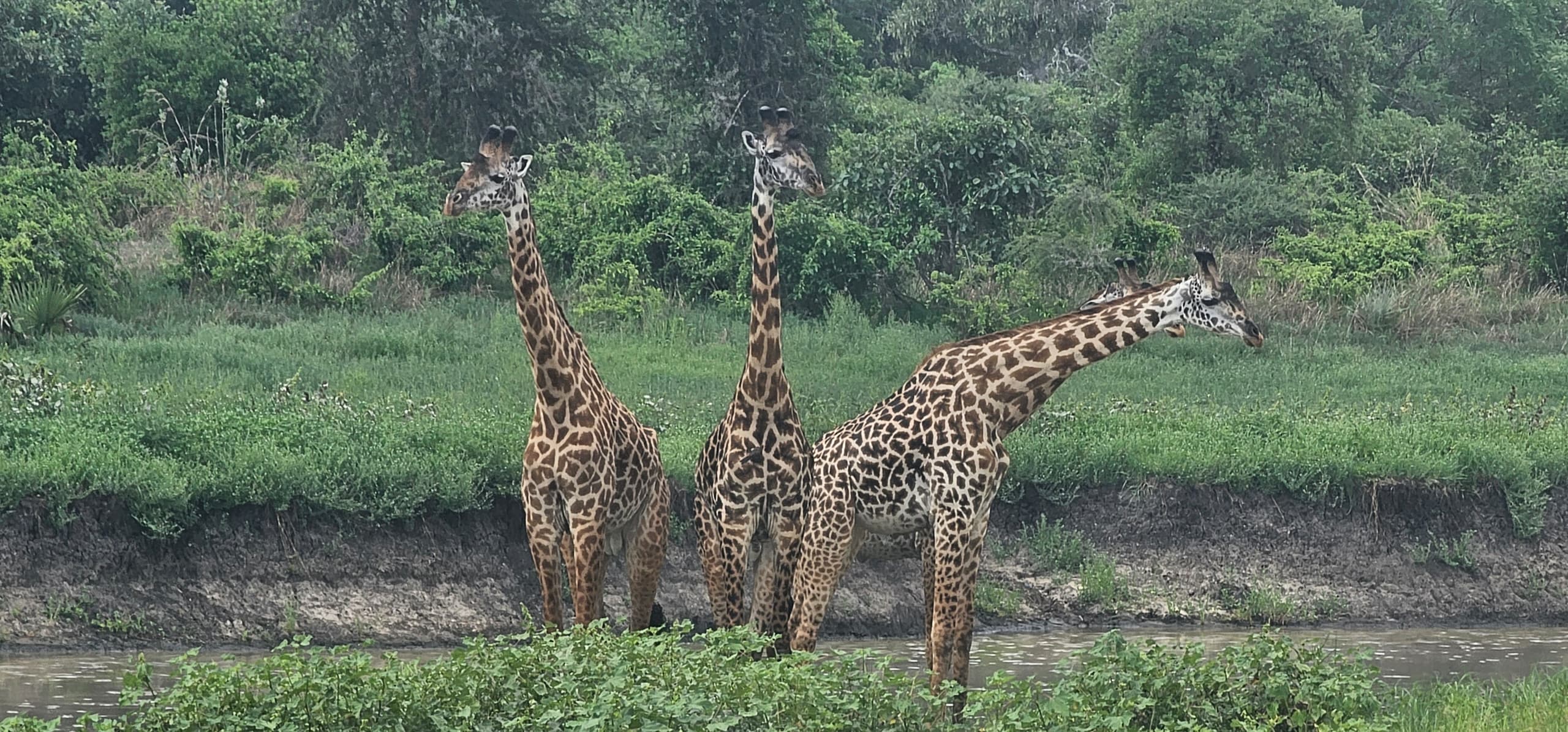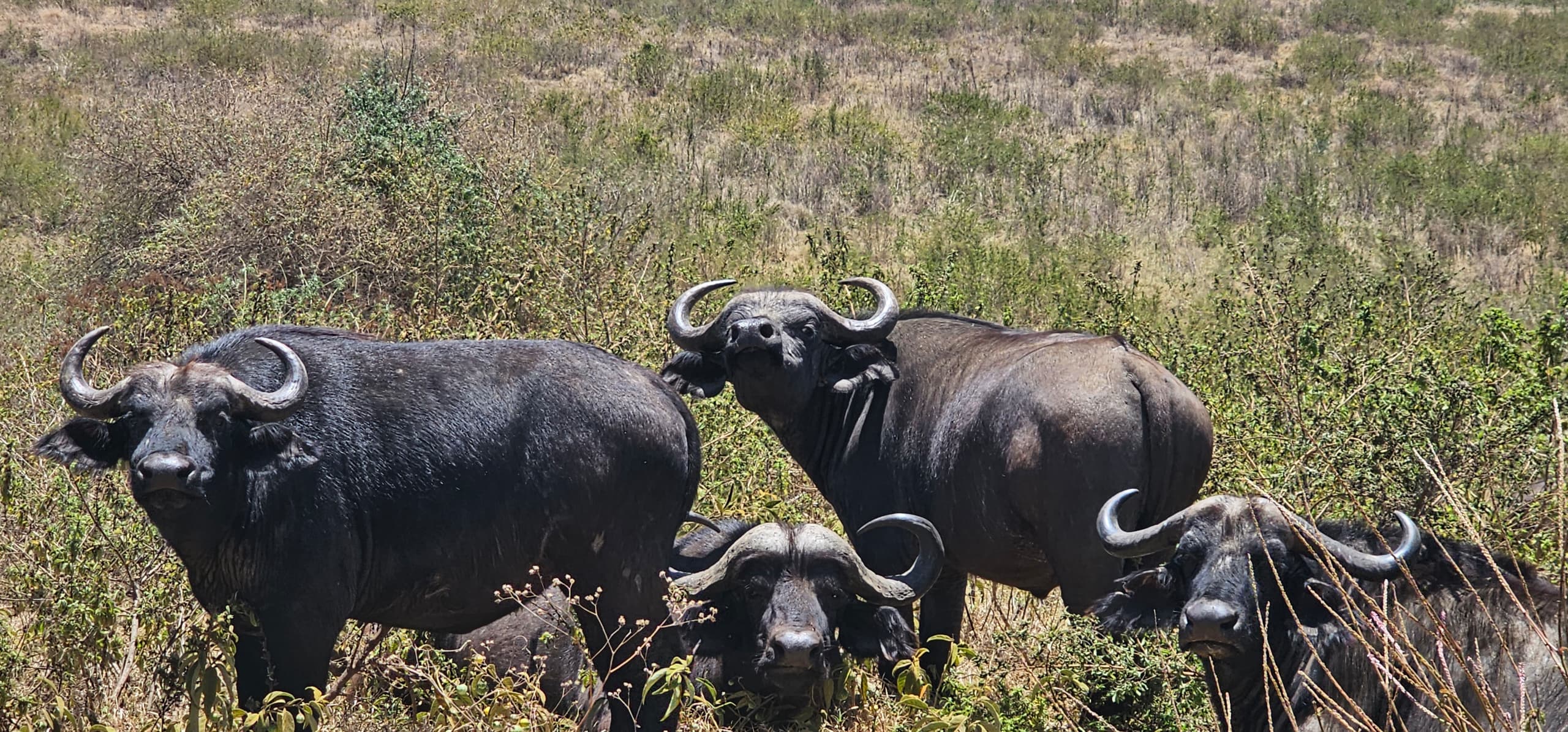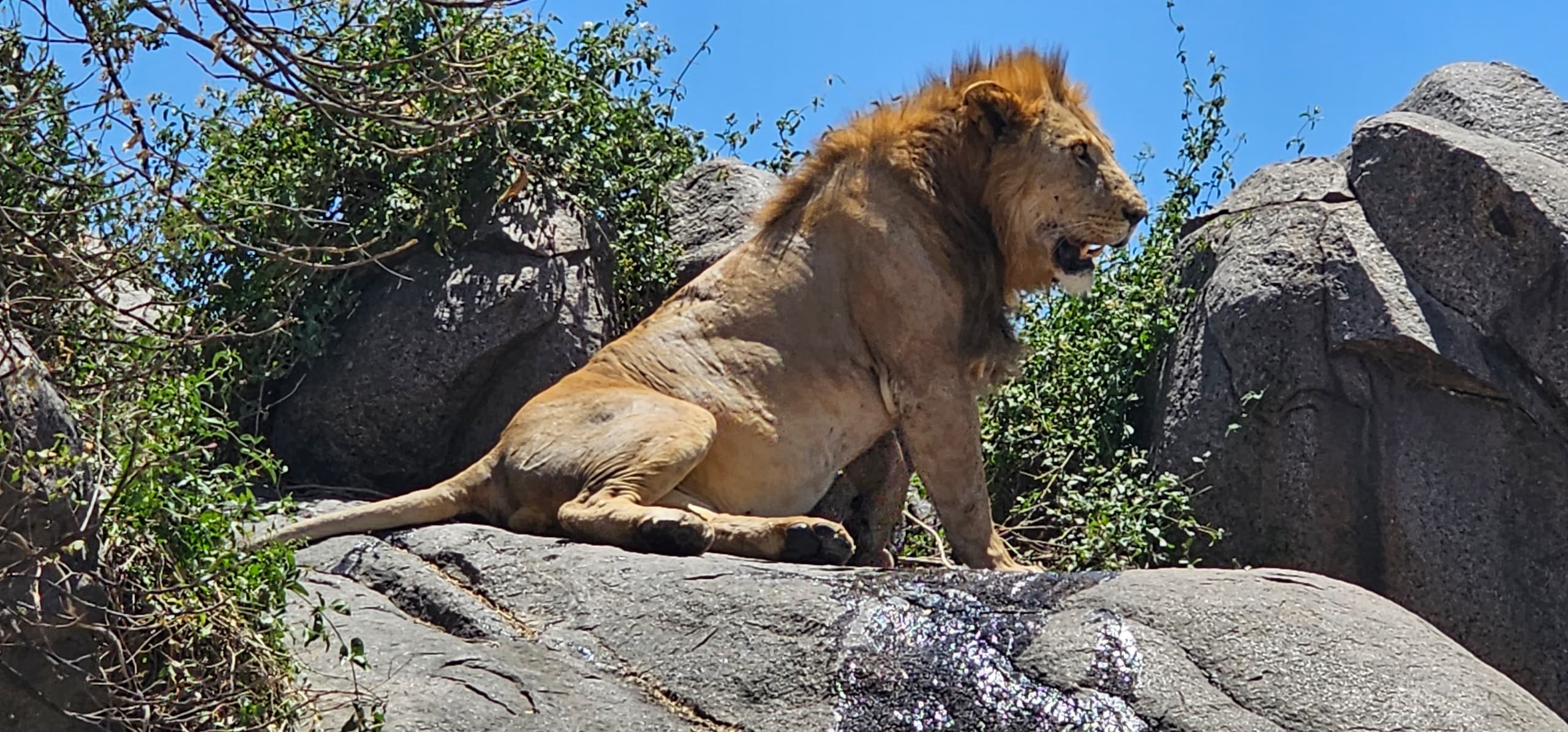Tanzania’s Northern Circuit Safari offers one of Africa’s most iconic safari experiences, featuring world-renowned destinations such as Serengeti National Park, Ngorongoro Conservation Area, Tarangire National Park, Lake Manyara National Park, and the hidden gem of Arusha National Park. This comprehensive guide is designed to help you plan an unforgettable journey through this breathtaking region.
By carefully planning your Northern Circuit safari, you’ll experience Tanzania’s unparalleled wildlife, landscapes, and cultures in a way that suits your interests and budget. Let me know if you need help refining your itinerary or finding specific operators!
Northern Circuit Safari
During this 6-day Northern Tanzania safari, you’ll visit four of the Northern Circuit’s most stunning nature reserves: Lake Manyara, Tarangire, Serengeti, and Ngorongoro Crater. Accompanied by your dedicated guide, you’ll witness breathtaking wildlife encounters. After dark, relax in the welcoming comfort of intimate camps and lodges.
TOP SPOTS TO VISIT ON THE NORTHERN CIRCUIT
Serengeti National Park
The northern Tanzanian Serengeti National Park is well-known for the annual large-scale zebra and wildebeest migration. The herds move north from their mating grounds in the lush southern plains in search of new grazing Many traverse the crocodile-filled Grumeti River through the muddy western crossing. Some head northeast to the Lobo Hills, where black eagles soar. The granite outcrops of the Moru Kopjes shelter black rhinos.
Tanzania is home to the Serengeti National Park, which is well-known for its abundance of animals and the spectacular wildebeest migration.
The Serengeti covers 14,763 square kilometers (5,700 square miles), with Lake Victoria to its west and Kenya to its north.
With 2,500 lions, the highest concentration anywhere, the Serengeti is home to the greatest number of big mammals in the world. More than 518 bird species have been identified in the park, including several Eurasian migrants that are there from October to April throughout the European winter.
Lodging: The Serengeti Ecosystem provides a variety of accommodation options.
Distance: Although the Serengeti is just 335 km (208 miles) away from Arusha, the journey is still quite lengthy because of the road conditions. When traveling to the Serengeti National Park, it is advisable to make stops along the route. We want to emphasize that if you want to visit the Ngorongoro Crater on your journey, it is recommended to reach the rim the afternoon prior and then dedicate the entire following day to exploring the Crater.
Optimal visiting period: To witness the Wildebeest migration from Serengeti National Park to Maasai Mara National Reserve, the ideal time is from December to July, while for observing predators, it is best from June to October.
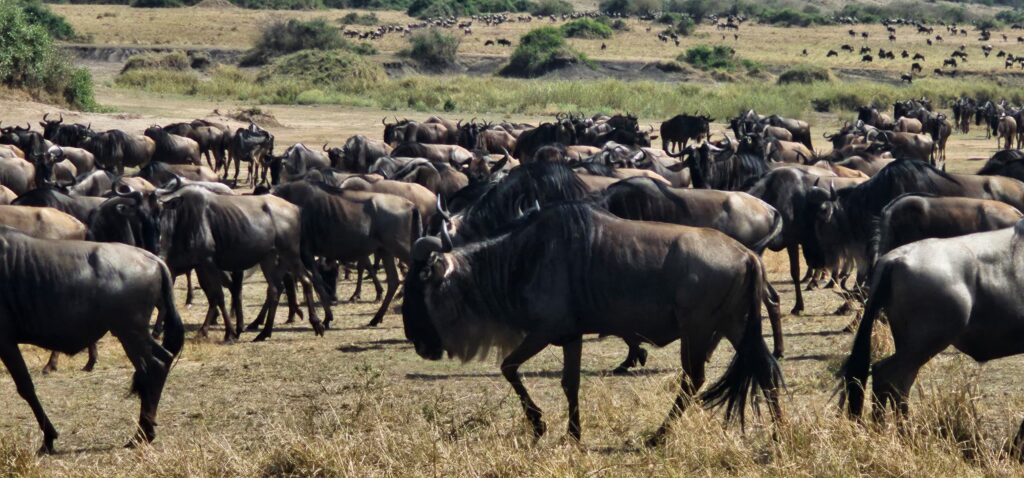
Ngorongoro Conservation Area
The Ngorongoro Crater lies on the eastern edge of the Great Rift Valley in northern Tanzania. The park, overseen by the Ngorongoro Conservation Area Authority, is situated in the Oloirobi district’s communities, which have grown as a result of the national park’s creation. The money raised from park fees in Ngorongoro is always used to improve the people around it, notably the villages of Oloirobi, which have witnessed improvements in infrastructure and general well-being, such as schools, hospitals, and water and electricity systems.
Tourists can participate in a variety of activities when visiting Ngorongoro because of the abundance of wildlife species and other attractions. Tanzania is celebrated for its Ngorongoro Crater, a premier conservation area, and has gained global recognition due to these remarkable attractions and activities. The Ngorongoro Conservation Area is home to several wildlife species and is one of the few locations in the world where you may see all five of Africa’s mammals: buffalos, lions, elephants, leopards, and rhinos. Wildlife watching is the most popular activity for observing animals in their natural habitat. A visit to the Olduvai Museum, the breathtaking Ngorongoro Crater caldera, the Gold Mountains, bird species, and footprints at the Laetoli are some of the other attractions in Ngorongoro.
Tarangire National Park
Tarangire’s unique landscape, defined by the gnarled silhouettes of massive baobab trees, provides a stunning backdrop for exceptional wildlife viewing, especially during the winter peak season. In the dry months, its wetlands transform into verdant grasslands, drawing vast herds of elephants, buffalo, antelope, and other grazing animals. Predators like lions and other carnivores are frequently spotted. The park boasts over 500 bird species, some unique to Tanzania.
Far from the busy northern areas, the southern part of the park offers walking safari camps, giving visitors the chance to deeply engage with the African bush through guided treks.Some of the biggest elephant populations in the nation can be found in Tarangire. From July to October, during the peak migration season, 5,000 of these majestic elephants travel to Tarangire, where you might spot herds of up to 300. Beyond elephants, these grasslands host a variety of mammals, including antelopes, zebras, and lions.
Northern Circuit Safari Plan
Tanzania’s most breathtaking scenery and largest animal concentrations can be found in Tarangire National Park. It is easily accessible from Arusha, and it is frequently coupled with the Ngorongoro Conservation Area and the Serengeti to complete Tanzania’s northern safari circuit.
Tarangire National Park has a lovely, moderate climate. The two rainy periods are the “long rains” (March to May) and the “short rains” (November to December). Rarely does it rain throughout the day; it generally does so in the afternoon. Although it rarely gets too hot, it does become cold in the mornings and evenings. For early morning game drives, warm gear is recommended.
The dry months are June, July, August, September, and October. In the afternoon, the temperature is 26°C (79°F).The sky is calm and the days are clear. At night, the temperature drops to about 14 °C (57 °F).
In contrast to the Serengeti, which can become busy, especially during migration season, Tarangire provides a more intimate safari adventure. It is the perfect place for those who want to get away from the masses and take advantage of crowded game drives and unusual wildlife encounters.
Nestled between Lake Manyara and the dramatic escarpment of the Great Rift Valley, Lake Manyara National Park is a protected area located in Tanzania’s Arusha and Manyara Regions. Managed by the Tanzania National Parks Authority, the park covers 325 km², with the lake itself making up about 230 km² of this area.
Despite its relatively small size, Lake Manyara National Park is a premier wildlife destination in Tanzania. It is famous for its unique tree-climbing lions, large herds of elephants, and exceptional birdwatching opportunities.
Best Time to See Flamingos Lake Manyara is a haven for bird enthusiasts, particularly during the rainy season from November to May. This period offers the best chance to witness the vibrant spectacle of flamingos congregating around the lake, along with a variety of migratory bird species.
